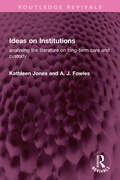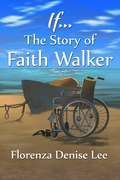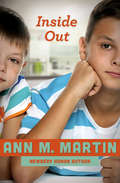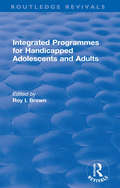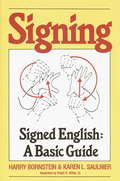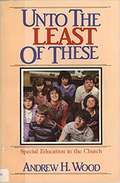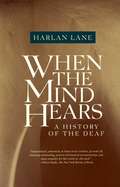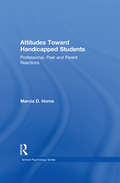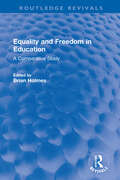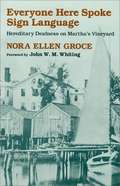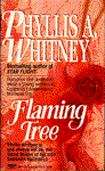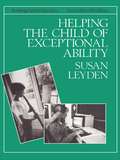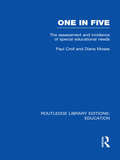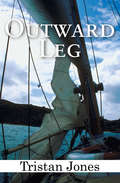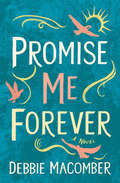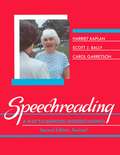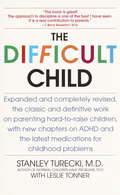- Table View
- List View
Ideas on Institutions: analysing the literature on long-term care and custody (Routledge Revivals)
by Kathleen Jones A J FowlesFirst published in 1984, Ideas on Institution is a review of the major English-language literature of the past two decades on the experience of living in institutions - hospitals, mental hospitals, prisons. The survey opens with a consideration of the writings of Erving Goffman, Michael Foucault, and Thomas Szasz. They shattered the liberal consensus that the purpose of imprisonment was to reform. Instead, their work argued that the purpose of prisons and mental hospitals was social control, and that prisons created criminals, and mental facilities created mental illness. Part II looks at four British studies : Russell Barton's Institutional Neurosis which suggested the existence of a new disease entity; Peter Townsend's The Last Refuge, a study of old people in residential care; The Morrisses’ Pentonville, a study of a London prison which became a classic in criminology; and Sans Everything, a symposium which paved the way for a series of official hospital enquiries in the 1970s. Part III examines David Rothman's two historical studies on how and why the U.S. constructed institutions, and how and why reform movements failed; N.N. Kittrie's The Right to be Different, a wide-ranging attack on the compulsory treatment of a variety of 'deviants', including the mentally ill, juvenile delinquents and drug abusers; Cohen and Taylor's Psychological survival, a disturbing analysis of the lives of long-term prisoners in a maximum security wing; Zimbardo's Stanford Prison Experiment on the malignant effects of prison conditions on the personalities of both prisoners and their guards; and King and Elliott's study of Albany Prison, showing how a promising therapeutic experiment went wrong. This book will be of interest to students of history, gerontology, sociology, social policy, penology, psychology and political science.
If…The Story of Faith Walker: The Story Of Faith Walker
by Florenza LeeImani is unlike other girls her age.Due to developing meningitis at birth, she received a life-saving surgery that resulted in her being a wheelchair user.This, however, has not hindered her from being an active, outgoing, caring young lady. While in Children’s Church, Matthew 14 catches her attention; it is the account of Peter walking on water. Imani is unsure as to why the story continues to speak to her heart, “Lord, if it is you, tell me to come to you on the water.” No matter what Imani does, she simply cannot shake the feeling that there is a message calling out to her from these verses. She feels as though she is on a quest to find clues to a puzzle she didn't even know existed. Do the verses mean she will one day walk again, or something else? Imani isn’t entirely sure; all she knows is she is about to have a faith walk, unlike any other.ABOUT ITIF…THE STORY OF FAITH WALKER This book demonstrates that faith may be utilized in every area of our lifes.
Inside Out
by Ann M. MartinHow do you love someone who makes you miserable? Eleven-year-old Jonathan just wants to have a normal life—for instance, a night when he isn&’t awakened by screams, or a day when he&’s not teased by other kids for having a disabled family member. But normal can&’t happen when your little brother is severely autistic.James, Jonathan&’s four-year-old brother, needs more help than his parents can give him. And it&’s not just hard for Jonathan—it&’s causing strife for the whole family. When James gets into a special school for autistic children, Jonathan and his sister have to make a lot of sacrifices so he can go. Jonathan comes up with an idea to help out the family—but will his plan work, or only lead to more teasing?This ebook features an illustrated personal history of Ann M. Martin, including rare images from the author&’s collection.
Integrated Programmes for Handicapped Adolescents and Adults
by Roy I. BrownFirst published in 1984, Integrated Programmes for Handicapped Adolescents and Adults explores the need to develop integrated programmes for adolescents and adults with developmental disabilities. Whilst the training models and concepts examined largely relate to formal areas of education, such as reading, mathematics, and writing, the book also pays close attention to social education skills, including home management, budgeting, meal preparation, and the development of positive familial relationships. Integrated Programmes for Handicapped Adolescents and Adults presents a number of projects from different parts of the world, with an emphasis on linking research and practice.
Nature and Treatment of Stuttering
by Richard F. Curlee William H. PerkinsDoctors Richard E. Curlee and William H Perkins delve into the causes of stuttering and suggest tips to deal with stuttering.
Self-Esteem And Adjusting with Blindness: The Process of Responding to Life's Demands (First Edition)
by Dean W. TuttleThis book written by a well-known professional in the field of Self Esteem discusses in easy to understand language the feelings and emotions attached to vision loss or going blind, or for that matter growing up blind. The author uses personal experiences as well as quotes from books and other people experiences to illustrate his points. This book is used as part of a course at the Hadley school for the Blind on Self-esteem. Recommended for anyone loosing their vision, growing up with vision loss, or working with blind students or friends.
Signing: A Basic Guide
by Karen L. Saulnier Harry Bornstein Ralph R. MillerNow available as an eBook, this quick-reference dictionary is for everyone who knows, cares about, or wants to communicate with someone who is deaf or hearing impaired. Designed by Harry Bornstein and Karen L. Saulnier, two of the foremost experts on sign language, Signing features more than one thousand black-and-white illustrations created specifically for hearing and non-hearing people who want to learn how to sign. Packed with grammar tips and vocabulary words arranged by subject for easy reference, Signing is a comprehensive guide to mastering the basics of Signed English and can be used alone or in conjunction with the Living Language video, Say it By Signing.
The Eyes That Lead: The Story of Guide Dogs for the Blind
by Michael Tucker"For anyone who has ever seen a guide dog working, or is in the slightest bit interested in dogs, I recommend they read this book and share in some of the delights of a guide dog-trainer and maybe glean a little of the love and understanding that's shared between blind person and guide dog. " From the foreword by Sheila Hocken, author of the bestselling Emma books. Michael Tucker, the highly successful guide-dog trainer who now runs his own school, here distills twenty years of practical experience to produce a fascinating and wide-ranging account of how both dog and owner are taught their roles. The book describes the choice of dog and the history of the breeds, and follows the arduous traffic training, obstacle tests and temperamental assessments to which each animal is subjected. The author explains the guidance given to the owner in gaining confidence in his or her new companion, from the initial meeting to the difficult road manoeuvres which must all be mastered. This unique and heartwarming study will serve to shatter the myths of the uncanny intelligence of the dogs, and for the first time will explain for the general public and for those more intimately concerned, the full story lying behind every blind person and his guide.
The Sunflower Forest
by Torey L. HaydenFrom the Book Jacket: "Torey Hayden has the rare ability to write about love and hate and loyalty in ways which never fail to move the reader. I was deeply touched by The Sunflower Forest. Rabbi Harold Kushner, author of When Bad Things Happen to Good People The stunning fiction debut of a writer whose great compassion for youth and extraordinary narrative power have endeared her to readers everywhere. How do you keep it together when you're a normal, well-adjusted teenager in a family gone mad? Seventeen-year-old Lesley doesn't know. Justifiably preoccupied with high school, the prospect of college, and her first serious romance, she must also deal with a mother whose dark and tragic past in Nazi-occupied Europe drives her closer to insanity every day; with a father unwilling to acknowledge his wife's deteriorating mental state; and with a sister too young to know the difference between craziness and health. Torn between an intimate reality that is insane and the worldly pressures of her own coming of age, Lesley must muster all her strength-to stand firm in the face of the cataclysm that will soon come down on all their heads.
Unto the Least of These: Special Education in the Church
by Laverne Webber Ellen Glanville Andrew WoodDescribes how to develop a ministry for the mentally retarded. Includes teaching strategies, discipline information, and other useful information.
When the Mind Hears: A History of the Deaf
by Harlan LaneImpassioned, polemical, at times even virulent, the author shows immense scholarship, powers of historical reconstruction, and deep empathy for the world of the deaf. The unimaginable world of those who have been born deaf is made almost imaginable by Lane's account of their history. The author's passion and directness are delivered through the mouth of one of his subjects, himself deaf, who became an intellectual leader of the deaf community in France and then in America. The story he tells is extraordinary and is perhaps the best illustration of what it means to see the condition and the patient as a whole.
Attitudes Toward Handicapped Students: Professional, Peer, and Parent Reactions (School Psychology Series)
by Marcia D. HorneMany handicapped children are now being treated and educated in the mainstream of society. Therefore it is important for professionals to be knowledgeable about the attitudes of societal members toward these students. This text is a thorough and invaluable sourcebook on how attitudes are formed, measured, and changed. An extensive discussion about professional, peer, parental and sibling attitudes toward a class or family member, and reviewing methodologies for change are provided.
Diabetes, Vision Impairment, and Blindness
by Allene R. Van SonVision impairment is a common complication of diabetes mellitus, which is itself the leading cause of new cases of blindness among adults in the United States. Three percent of the country's 10 million diabetics have experienced severe vision loss as a result of the disease. This means that diabetics frequently have to face additional problems of impending loss of vision and blindness. The purpose of this pamphlet is to explain the relationship between visual impairment and diabetes and to identify recent advances in treatment and rehabilitation to help diabetics and their families deal with the problems of vision loss.
Eclipse: A Nightmare
by Hugues De MontalembertEclipse is the autobiographical work by a young artist living in New York. It describes, from the evening he was attacked and lost his sight, the two years it took to him to go back to Life and swim freely in the sea of Java. 'I had to give birth to myself.' The beautiful, unpredictable and eccentric ballerina, Valouchka, leads him into the reconquest of the dance with life. Hospital, Rehabilitation Centre, joy, despair, love. and one morning, he closes the door behind and flies alone to Indonesia. 'Fear is the true Blindness'. You experiment in those pages a deep meditation on life, love, perception, visual world and inner vision. Poignant, poetic and sometimes hilarious, this book is a Song to Life, which questions all of us.
Equality and Freedom in Education: A Comparative Study (Routledge Revivals)
by Brian HolmesFirst published in 1985, Equality and Freedom in Education investigates the extent to which it is possible or desirable to provide equal opportunities in education, regardless of age sex, race, language, and social class. Attempts to make such provision regularly attract the criticism that they remove the freedom of parents and religious bodies to educate children in accordance with their particular wishes. To understand this dilemma, the book analyses the educational systems and practices in England and Wales, France, the USA, the USSR, China and Japan. Information about each system is provided in accordance with a taxonomy, developed by Professor Holmes for the International Bureau of Education in Geneva, and widely accepted by Ministries of Education throughout the world. Simplified diagrams show how school systems are organised and how children pass through the school system, and essential statistical information, taken from UNESCO sources, is also provided. The book will be of interest to students of education and sociology.
Everyone Here Spoke Sign Language: Hereditary Deafness on Martha's Vineyard
by Nora E. Groce<P>From the seventeenth century to the early years of the twentieth, the population of Martha's Vineyard manifested an extremely high rate of profound hereditary deafness. <P>In stark contrast to the experience of most deaf people in our own society, the Vineyarders who were born deaf were so thoroughly integrated into the daily life of the community that they were not seen-- and did not see themselves-- as handicapped or as a group apart. Deaf people were included in all aspects of life, such as town politics, jobs, church affairs, and social life. <P>How was this possible? On the Vineyard, hearing and deaf islanders alike grew up speaking sign language. This unique sociolinguistic adaptation meant that the usual barriers to communication between the hearing and the deaf, which so isolate many deaf people today, did not exist.
Flaming Tree
by Phyllis A. WhitneyA compassionate woman haunted by her past. A mysterious man who leads her to love. And the dangerous secret that is stronger than both of them. Kelsey Stewart is not thinking of love or adventure when she visits her aunt at her peaceful seaside inn nestled in beautiful Carmel, California. But when she is urged to help in the recuperation of Jody Hammond, a young boy who fell from a sea cliff, she finds her troubled heart coming back to life. And soon she finds herself falling in love with Jody's father, the mysterious, handsome Tyler.
Helping the Child with Exceptional Ability (Special Education Ser.)
by Susan LeydenFirst Published in 1985. Routledge is an imprint of Taylor & Francis, an informa company.
Images of Blind and Visually Impaired People in the Movies, 1913-1985: An Annotated Filmography with Notes
by Diane Wolfe Wendy EricksonListed in this book are the titles and other information about movies that include characters who are blind or visually impaired.
One in Five: The Assessment and Incidence of Special Educational Needs (Routledge Library Editions: Education)
by Paul Croll Diana MosesAt the time of its original publication this book was the first major survey of the nature of the difficulties that children with special educational needs experience in the classroom context of mainstream junior schools. The book is based on research involving interviews with heads and teachers, and on extensive observation of children in junior classrooms. The research is related to the report of the Warnock Committee and to problems of definition and assessment in the area of special education. The book describes the views which junior school teachers have of special educational needs and the numbers of children and types of difficulty they regard as falling into this category. It discusses the classroom behaviour and interactions of children with special needs, and some of the consequences of different teaching strategies. It also presents information on patterns of provision for special needs, assessment in the junior classroom and the teachers’ own views on integration.
Outward Leg
by Tristan JonesAfter seven years ashore and after having his left leg amputated, Tristan Jones decided to return to the sea. He began to piece together Operation Star and found the perfect vessel in a 36-foot trimaran. In October 1983, Jones and his only crew member, Wally Rediske, set out in Outward Leg from San Diego, intending to circumnavigate the world from west to east by sail.The book is the exciting story of Tristan's preparation for this major seagoing event and the chronicle of half of it. Tristan sailed down the western coast of Central America through the Panama Canal to a small Colombian town. There he had to fight for survival among hostile natives, drug dealers, and uncooperative port officers. He went on to Venezuela, Aruba, and the Dominican Republic during its 1984 revolution. Finally he reached New York and crossed the Atlantic to return to St. Katharine's Dock in London where he began his seagoing life thirty years before.
Piagetian Reasoning and the Blind
by Yvette HatwellThe book reports the results of a series of studies undertaken in the early 1960s on the cognitive development of children with congenital blindness.
Promise Me Forever: A Novel (Debbie Macomber Classics)
by Debbie MacomberRomance between a man paralyzed in an accident and his physical therapist.
Speechreading: A Way To Improve Understanding
by Scott Bally Carol Garretson Harriet Kaplan"This book is a must for your office, for your clients, and for all public libraries." --Feedback "Unlike other consumer-oriented books on speechreading, this one not only focuses on practice exercises, but it also informs about the speechreading process and strategies to compensate for hearing loss . . . . This book could best be used by the professional as a client workbook to answer questions for hearing-impaired adults. It could also be beneficial to the hearing-impaired individual and his family members who are unable to enroll in therapy." --Ear and Hearing Speechreading: A Way to Improve Understanding discusses the nature and process of speechreading, its benefits, and its limitations. This useful book clarifies commonly-held misconceptions about speechreading. The beginning chapters address difficult communication situations and problems related to the speaker, the speechreader, and the environment. It then offers strategies to manage them. Speechreading provides practical exercises illustrating the use of these communication strategies in actual situations. It is an excellent book for late-deafened adults, families and friends, parents of children with hearing loss, and professionals and students. The three authors are all members of the Gallaudet University faculty--Harriet Kaplan is Associate Professor and Scott J. Bally is Assistant Professor in the Department of Audiology and Speech-Language Pathology, and Carol Garretson is former Assistant Professor in the Department of Communication Arts.
The Difficult Child
by Stanley Turecki Leslie TonnerHow to help--and cope with--the difficult childExpanded and completely revised, the classic and definitive work on parenting hard-to-raise children with new sections on ADHD and the latest medications for childhood disorders.Temperamentally difficult children can confuse and upset even experienced parents and teachers. They often act defiant, stubborn, loud, aggressive, or hyperactive. They can also be clingy, shy, whiny, picky, and impossible at bedtime, mealtimes, and in public places. This landmark book has been completely revised to include the latest information on ADHD, medications, and a reassuring approach to all aspects of childhood behavioral disorders.In this parenting classic, Dr. Stanley Turecki, one of the nation's most respected experts on children and discipline--and himself the father of a once difficult child--offers compassionate and practical advice to parents of hard-to-raise children. Based on his experience with thousands of families in the highly successful Difficult Children Program he developed for Beth Israel Medical Center in New York City, his step-by-step approach shows you how to: Identify your child's temperament using a ten-point test to pinpoint specific difficulties Manage common--often "uncontrollable"--conflict situations expertly and gently Make discipline more effective and get better results with less punishment Get support from schools, doctors, professionals, and support groups Understand ADHD and other common diagnoses, and decide if medication is right for your child Make the most of the tremendous potential and creativity that many "difficult" children haveDrawing on his experience with thousands of families in his highly successful Difficult Child Program, Dr. Turecki shows parents how to:Identify their child's difficult temperament using a ten-point test to pinpoint specific difficultiesManage typical conflict situations expertly and kindlyMake discipline more effective and get better results with less punishmentGet support from schools, doctors, and others Understand ADHD and other common diagnoses, and decide whether medication is right for their childMake the most of the child's creativity and potential -->From the Trade Paperback edition.
